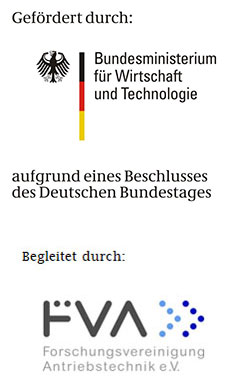EVID – Identification of Optimal Powertrain Configurations for Electric Vehicles

Period: 2010-2013
Cooperation: TU Braunschweig (Institut für Fahrzeugtechnik)
Support: see right
The development of modern vehicles and in particular of electrified drive systems is characterized by a high degree of complexity and a wide variety of variants with rising customer expectations. With a look at the design of the drives optimised to these boundary conditions, the focus is on legal requirements as well as specifications and customer requirements for the vehicle. In order to create an optimal vehicle concept, it is usually not appropriate to optimize the individual components with regard to the requirements, but to take a holistic view of the vehicle system requires a cross-component approach.
In this context, the so-called EVID method (Electric Vehicle Identification – identification of optimal powertrain configurations for electric vehicles) is used. The aim of the EVID method is to determine an optimal powertrain configuration for each of a selection of vehicle concepts that differ in their application profile (e.g. city vehicle or distribution vehicle in the city and overland traffic). If the input parameters are varied (design parameters of the components such as number of gears, ratio coverage, total system power, electric motor torque, battery capacity), the optimum solution is identified on the basis of the characteristic parameters relating to driving performance, energy balance and costs, which are taken into account in an evaluation function by means of different weightings. Mathematical models (MM) enable an evaluation with minimum computing time. These models are intended to represent the interrelationship of basic and characteristic parameters as accurately as possible. The MM and the computational models are then used in an optimization algorithm to identify the optimal concept, its components and the associated input and characteristic parameter values.
Selected publications: Antriebsstrangoptimierung von Elektrofahrzeugen
